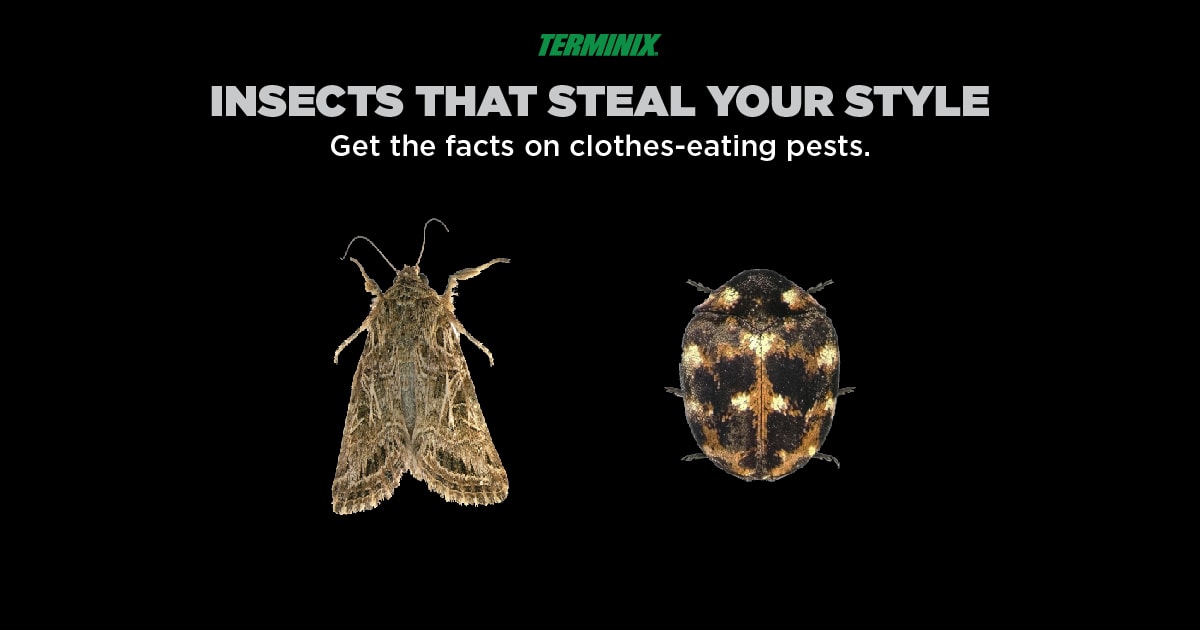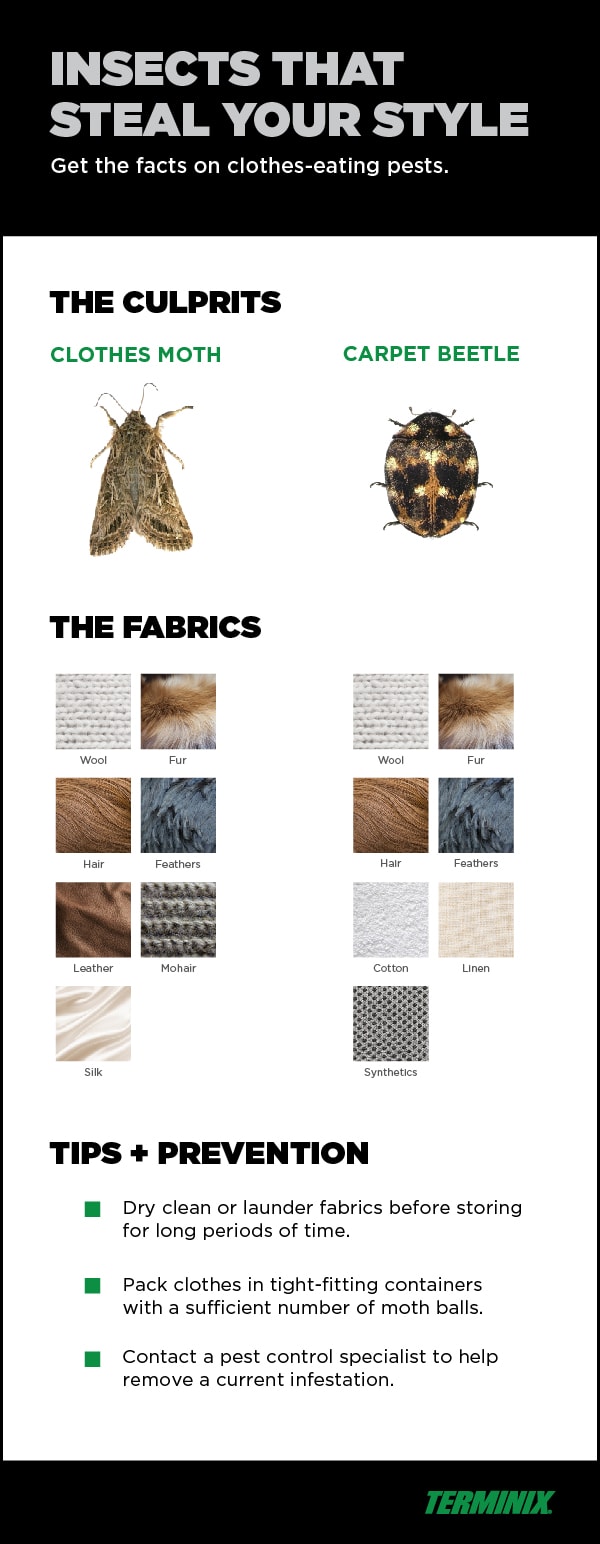Pests have a way of wreaking havoc on clothes in storage. If you’ve ever removed an item of clothing from storage, only to find it dotted with unsightly little holes, a pest is likely to blame.

Pests have a way of wreaking havoc on clothes in storage. If you’ve ever removed an item of clothing from storage, only to find it dotted with unsightly little holes, a pest is likely to blame. Despite their size, some pests can cause enough damage to an item of clothing to force you to retire it.
What pests are responsible for damage to your clothing? What fabrics do they attack? How can you help safeguard your clothes from damage? Here are some things you need to know.
Which pests cause clothing damage?
The two main culprits behind damage to clothes in your closet or in storage are the clothes moth and the carpet beetle.
Clothes moth larvae, not adult clothes moths, are responsible for clothing damage. Adult female clothes moths typically lay 100 to 300 eggs in areas where there is ample food for hatched moth larvae to eat. The food that clothes moth larvae eat is keratin, a protein found in animal-based materials.
Similarly, it is carpet beetle larvae, and not adult carpet beetles, that feed on animal materials. Like clothes moths, adult female carpet beetles will lay approximately 100 eggs in areas where larvae will have plenty to eat.
What fabrics do pests attack?
Together, clothes moth larvae and carpet beetle larvae eat a wide range of clothing materials.
Clothes moths feed mostly on wool, fur, hair and feathers, and less often on leather, lint, mohair and silk. The moth larvae look for keratin, a protein found in animal-based materials, including your skin, hair and fingernails (they don’t eat these things while attached to a live being though). That’s why fabric stained or soiled with perspiration or oils is vulnerable.
Carpet beetle larvae also feed on animal materials, like wool, fur, hair and feathers, but they may also attack cotton, linen and synthetic fibers if they are soiled.
Note: Interestingly, one of the least likely things for a carpet beetle to infest is modern carpet. That’s because modern carpeting is made of a variety of synthetic materials, usually with little or no natural fiber contents. However, antique carpets or rugs are quite often a target because they are usually made with completely natural fibers.
How can you help protect your clothing from pests?
Fortunately, there are precautions that you can take to help safeguard your clothing from damage by clothes moths and carpet beetles.
A good defense is a good offense. Susceptible fabrics, especially woolen items, should be dry-cleaned or laundered before being stored for long periods.
Not only does cleaning help destroy any eggs that could subsequently hatch and chow down on your item of clothing, it also helps remove food and perspiration odors that can attract these pests.
When you pack your clothes, be sure to pack them in tight-fitting containers with moth balls, according to label instructions. The vapors from moth balls are lethal to clothes moths but they must be present in sufficient concentrations to work properly.
However, though they can help, DIY methods can often fall short of complete control. If you are unable to get the clothes moths under control, or if you want the help of a professional from the start, consider contacting a pest control specialist to help remove the moth infestation.
Given the opportunity, clothes moths and carpet beetles can go to town on your favorite items of clothing. By taking adequate precautions against insects that eat clothes, you can help save yourself an unpleasant surprise and expensive items of clothing.




